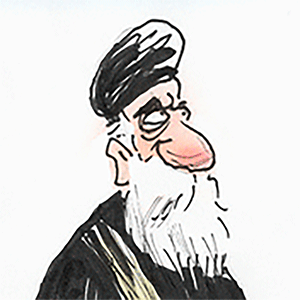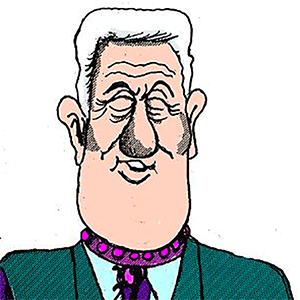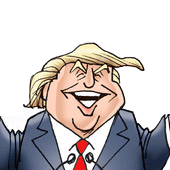Commentary: The steep cost of tariffs is finally coming into focus
Published in Op Eds
Some six months after the Trump administration announced its first tariffs on goods from China, Canada and Mexico, it’s starting to feel that policy may be starting to stabilize now that higher rates for most of the rest of America’s trading partners went into effect Aug. 7.
Although it’s still too early to confidently predict what the economic impacts of tariffs will be, some are becoming clearer. For example, the new levies have boosted government revenue by about $65 billion but overall prices on goods are accelerating. And what about the original motivation for implementing tariffs, which was to reduce trade deficits? The only sure way they might durably do so is if they increase savings or, more likely, reduce growth and investment.
America’s shortfall in trade has swung wildly in recent months, though the volatility is not surprising. Tariff policy has been highly uncertain, and Americans have been timing purchases to get ahead of any extra costs before they take effect. The monthly trade deficit expanded to 5.5% of gross domestic product ($138 billion on a non-annualized basis) in March before recovering to 2.4% of GDP ($60 billion) in June. That 2.4% is not much different from the deficits that prevailed in 2023 or in the later stages of the recovery from the global financial crisis between 2014 to 2019.
A more complete measure of trade is the current-account balance, which includes investment flows as well as exports and imports of goods and services. This measure isn’t available monthly, and the latest data is for the first quarter. At the time, the current-account deficit expanded to 6% of GDP from 4.2% in the fourth quarter of 2024. Based on what has happened with trade, the shortfall likely shrank back to 4.5% of GDP in the second quarter.
All this is to show that trade and current-account balances will rise and fall in the short run as the economy adjusts to the new tariff regime. Over the long run, if the goal really is to durably reduce these external deficits, then that will require fundamental shifts in the economy.
The current-account balance is determined by taking private savings and subtracting both government deficits and private domestic investment. In essence, if the U.S. saves more than it invests domestically, then we have a surplus and the remainder has to flow overseas in the form of net U.S. investment abroad. If U.S. domestic investment is more than domestic savings, then we have a deficit and the gap is filled by foreign capital flows.
Accounting identities like these are not causal models, but they do at least clarify the channels for effecting change. Expanding the current-account surplus therefore must mean some combination of, directly or indirectly, 1) increasing private savings, 2) decreasing the federal budget deficit, and 3) reducing private investment.
Would we expect the new tariffs to accomplish any of these possibilities? Perhaps, but it’s uncertain. Private savings rose and then fell modestly earlier this year along with the volatility that resulted from tariffs going into effect. And since tariffs are a type of tax that puts upward pressure on prices and reduces real after-tax incomes, we’d expect private savings to fall, not rise.
A more likely channel for tariffs to reduce external deficits is through slower investment. Tariffs will likely curb business investment, and thus economic growth, as profits fall and input costs rise. The Budget Lab calculates that 2025 tariffs will sustainably reduce the long-run level of U.S. real GDP by 0.4%, primarily through reduced productivity and investment. Moreover, while tariffs tend to strengthen the dollar, the greenback is weaker by 3.1% from two years ago on average.
Slower growth and investment along with a weaker dollar (assuming the currency remains lower) will otherwise put downward pressure on external deficits. But this effect comes with a steep cost: Lower investment means slower economic and wage growth in the long-run, and slower economic growth otherwise worsens fiscal sustainability at a time when the government is dealing with record debt and budget deficits.
Another possibility is that tariffs raise public savings through greater revenues and a smaller federal deficit. The Budget Lab estimates that the 2025 tariffs to date, if left in place, would raise $2.7 trillion over 10 years conventionally-scored and $2.2 trillion after accounting for the dynamic effects of slower economic growth. That is substantial revenue, equal to 0.7% of GDP.
The problem is that the government has already laid claim to these tariff revenues. The tax and spending bill just passed by Congress will cost $3.4 trillion over the next decade, much more than the tariffs are likely to raise in revenue. Against pre-2025 law, the outlook for the budget deficit has gotten worse, not better, in the last eight months.
An even broader question is whether smaller external deficits should be a policy goal. At the very least, aiming for bilateral trade balances with every country does not make sense. An imbalance with a country is usually not a signal of unfairness, as the White House suggests, but rather a sign of economic specialization and the nature of global supply chains. Aggregate imbalances can be more concerning, especially over the long run, if they reflect macroeconomic distortions. But to the extent that current-account deficits are problematic, the most straightforward way to reduce them is not through trade deals but by cutting the federal budget deficit. Moreover, there’s no relationship over the past 60 years between current-account deficits and growth in real GDP per capita, or growth in median real wages.
External deficits that are expanding on an unsustainable basis can be concerning, and tariffs may modestly lower them in the long run by slowing growth and investment as well as causing the dollar to depreciate. In other words, careful what you wish for because the medicine may be worse than the disease.
____
This column reflects the personal views of the author and does not necessarily reflect the opinion of the editorial board or Bloomberg LP and its owners.
Ernie Tedeschi is the director of economics at the Budget Lab at Yale University and the former chief economist at the White House Council of Economic Advisers under the Biden administration.
©2025 Bloomberg L.P. Visit bloomberg.com/opinion. Distributed by Tribune Content Agency, LLC.
























































Comments